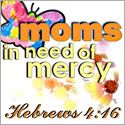- Colors
- Flavors (salty, sour, sweet, spicy, bland, bitter)
- Textures (crunch, crispy, smooth, dry, juicy)
- Shapes
- Size concepts: big, small, light, heavy
- Order: first, before, after, next, last
- Sorting, measuring, matching, counting (smallest measuring spoon, biggest cup, how many seeds in an orange)
- How are foods changed by heat and cold (solids, liquids)
- Where does food come from? How does it grow?
- Divide various foods into groups
- Nutrients and vitamins each food provides, and how our bodies use those vitamins and minerals
- Help children learn to share and take turns (while helping bake or prepare a meal)
- Table etiquette
- Helping set and clear the table
- Discipline to sit properly at the table
- Learning to properly use utensils and hold a cup
- **"When your children are helping, the job will not go quickly and will likely be messy. However, you are building lifelong skills. While you are enjoying your meal, encourage children to talk about what they have made and what happened during their day." Mealtimes are great conversation times, and as you share great food, you can all grow closer as a family too.
So the next time you're in the kitchen, don't just think about chopping up the celery; think of all that the experience of chopping the celery can teach your children! Have them count the diced pieces or sticks, sequence them into a row from smallest to largest, develop motor skills by spreading peanut butter on the sticks, and more. (Obviously, this is geared more toward preschoolers and early elementary, but with some creativity, you could come up with lessons for older children as well).





















Great post! We can teach our children so much just by interacting with them - no electronics or workbooks needed. Thanks for the ideas!
ReplyDelete